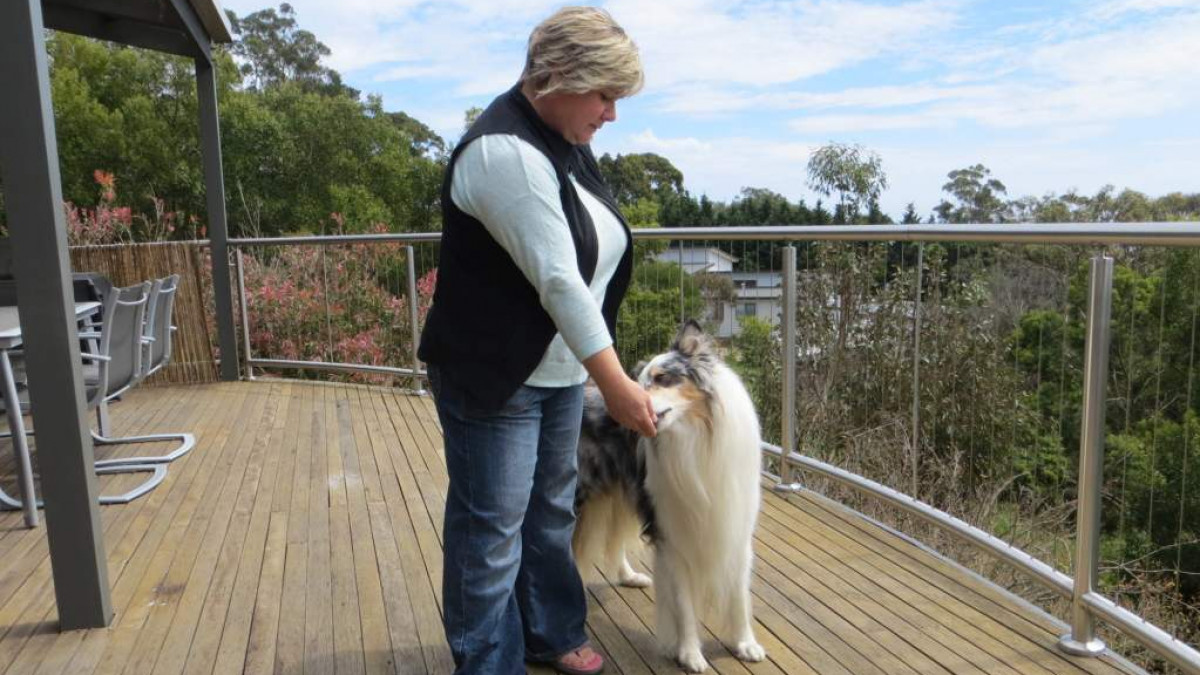For all the dogs who've touched our hearts
Stop Your Dog Mugging For Food: A Practical Guide

Stop your dog jumping, biting and snatching food by learning how to feed them with clarity and consistency.

Teaching a dog clear delivery patterns will stop them mugging for food. If they know when and how the food will be delivered, they have no need to jump, bark or bite to get it.
We want anticipation to work for us not against us!
Take the time needed to master this skill. It’s an essential foundation that will help build a great life-long habit.
Part 1 of this article can be found HERE

1. Practice without your dog
(By Julie van Schie)


Place sticky notes at the correct height so you can practice moving your body and hand to best suit your dog.

You need
- A small bowl of something treat sized to practise with. It can be dried beans, coins, Lego blocks or the dog’s food
- 1 sticky note
- A vertical surface (wall, door or cupboard)
- A table within reaching distance on which to place the practice food5 minutes of uninterrupted time without your dog (put them in another room)

Process
Determine your dog’s muzzle height when the head is held comfortably level, and attach a sticky note to a flat vertical surface at that height.
Put your bowl of practice “food” on a table beside you.
Take a bean from the bowl with one hand, pass it into the other and move the feeding hand to directly in front of the sticky note. Do not touch the sticky note.
Hold the bean in a softly cupped relaxed hand.
610a219eebe40_lg.jpg)
Do 10 repetitions with each hand.
If you have a small dog, bend your knees!
Repeat until you can find the correct placement consistently and without conscious effort.

2. Practice with the dog

They think the notes have been fed enough, their turn now!

You need
- Soft, moist, low to medium value food cut into small pieces (at least 20): cooked chicken, roast beef or cheese may be good choices. If this excites your dog too much, use something they will eat more calmly. Examples may be frozen peas or pieces of apple. Use kibble if nothing else works.
- A quiet environment (no other dogs, people or other exciting things)
- A food reserve bowl containing the chopped-up food ready for training.
- A table on which to place the food reserve bowl.
- 5 minutes of uninterrupted time and full focus.

Process
If your dog is jumping, biting and a bit out of control, see the Trouble Shooting section below.

From a bowl
Place food on the table within your (not the dog’s!) reach.
Turn and face your dog, signalling that you are ready to engage. Remain relaxed.
Take a piece of food with one hand, pass it into the other hand and place it directly in front of the dog’s muzzle leaving enough room for them to reach for it slightly.
Deliver the food with an open, softly cupped relaxed hand.
Once the dog has finished eating, repeat.
Deliver half of the food from your right hand and half from your left hand.
Practice at different times and in a variety of places.

From a hand
Hold 10 pieces of food in your non-feeding hand. Keep your arm relaxed and by your side.
Take a piece of food from the reserve hand with the feeding hand.
Deliver to your dog as previously, practice with both hands.
Practice at different times and in a variety of places.
Repeat these steps with anything you use to hold your training food reserve such as a pouch, vest or jacket. Keep your skills sharp by practicing delivery from a variety of reserves.


Trouble shooting
(By Kay Laurence)
If you have a dog who bounces around uncontrollably when food appears, try these steps:
Take food from the bowl and scatter a few pieces on the ground. The smaller these pieces the better, we want to take the edge off the urgency. Pieces about the size of rice would be perfect.
Once the first rush is passed, offer food from your giving hand during the “oh, wow, that was good moment”, and before the “I want more ….” moment.
We want the dogs with an urgency to take food to learn to trust the process and relax around food. Alternate between the scatter and the hand feed. Once you begin to get a stable result, hand feed more often than scatter, until scatter is only used in emergency situations.

You WILL be fed
If the scent of food is very arousing, keep several food reserve pots out in places where the dog can smell them but cannot reach them. The top of the fridge is an excellent place, or the very back of a kitchen counter.
Every now and then when your dog is not paying attention call him, walk calmly to the pot and practise the feeding exercise. Vary this between different pots – good for recall practise too!
The dog will learn that feeding is a frequent process through the day, and clear delivery patterns can set up a good lifetime habit.

To save your fingers, use a cup on a stick
A cup on a stick is a great way to teach a dog who mugs for food.
If you are training with a dog who is more than a little enthusiastic to eat finger as well as treats, you can employ a cup on a stick.
This is a small measuring cup with one piece of food in the cup. We want to place the food to the floor, not let the dog take it from the cup. Avoid letting the dog grab the cup as well.
When they are eating the piece on the floor, use the moment to load the next piece to the cup, make sure the dog knows there is food in the cup and again deliver to the floor.
When the process reduces the enthusiasm for hands, you can begin to shorten the stick so that the hand gets closer to the cup. Eventually you will be able to hold the cup in your hand and deliver to the floor.
This is a process familiar in training zoo and exotic animals where hand feeding could be dangerous, or that the tiger may be fearful of hands. Protective delivery.


3. Practice in a familiar behaviour
(By Julie van Schie)
When you and your dog have mastered feeding to the mouth, ask for some simple behaviours and reinforce as practised.
You could try:
- Stay
- Recall
- Sit
- Down
- Stand
- Paw shake
Happy training!

Feeding directly to his mouth is great for teaching stay in place


Kay Laurence for her contributions to this article and for turning it into a Project, Training With Food on her website: Learning About Dogs

Part One:


You might also like



Comments


Categories: : Dog training how to's
Comments
Never miss a thing!

 Julie van Schie
Julie van Schie 



